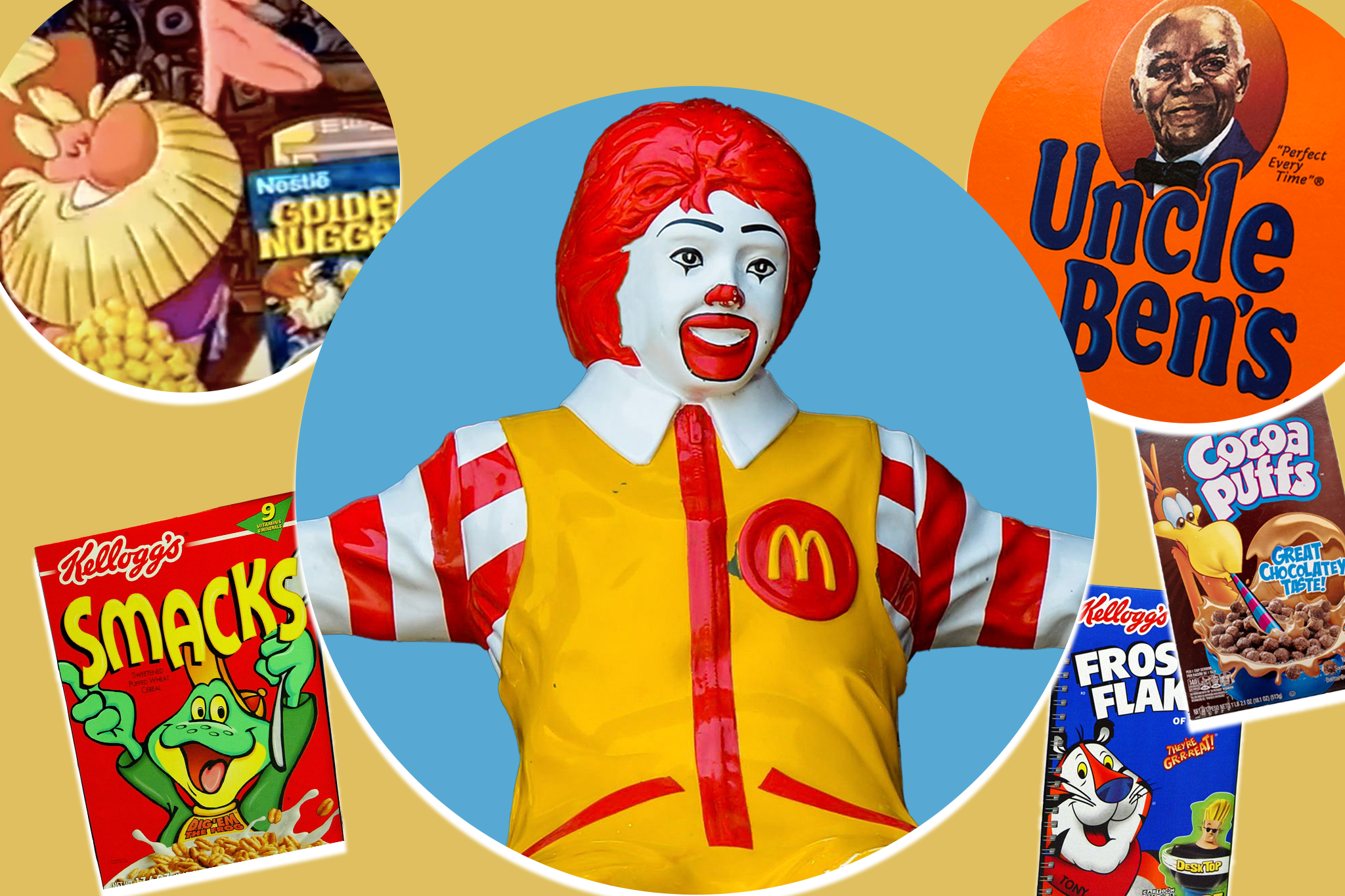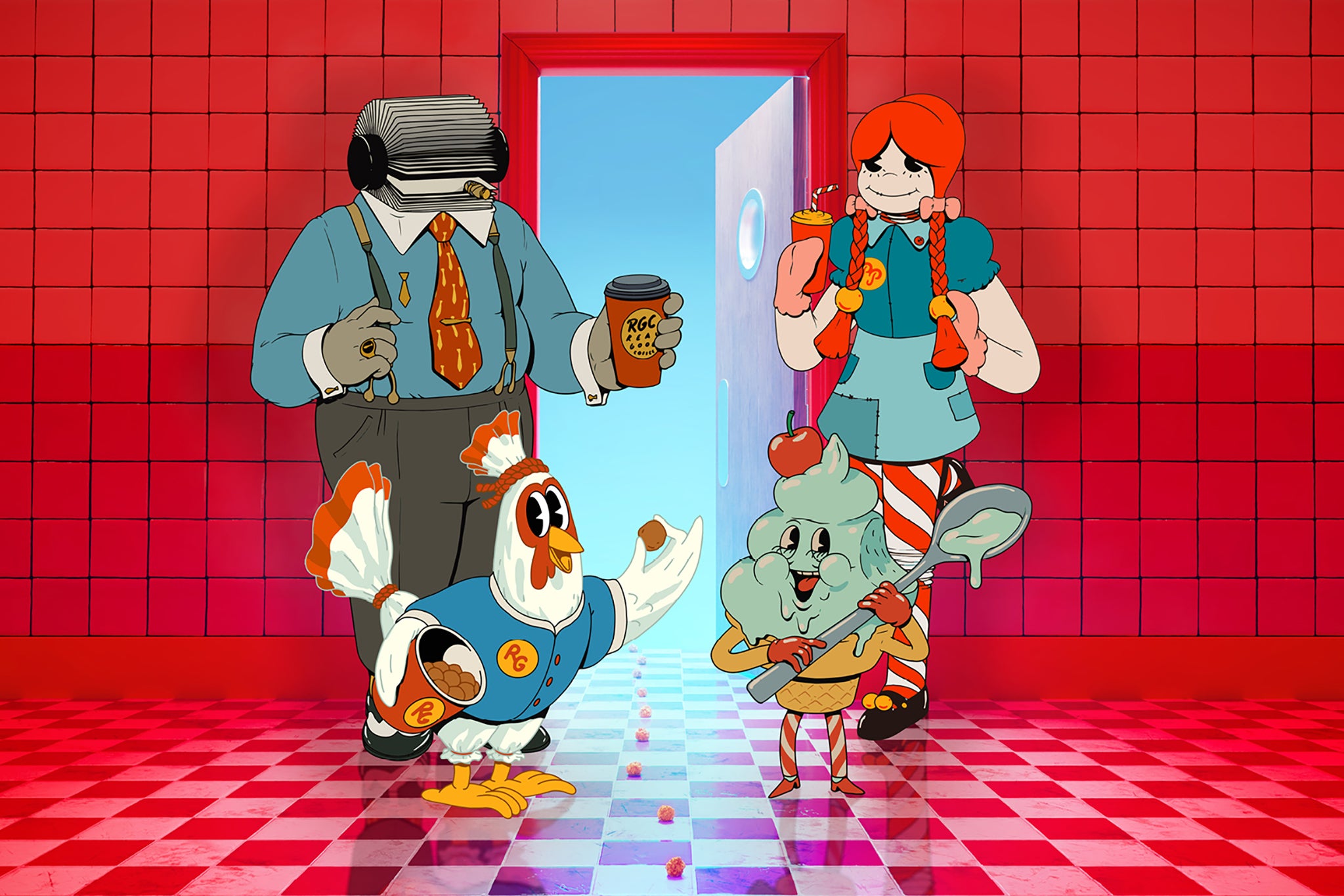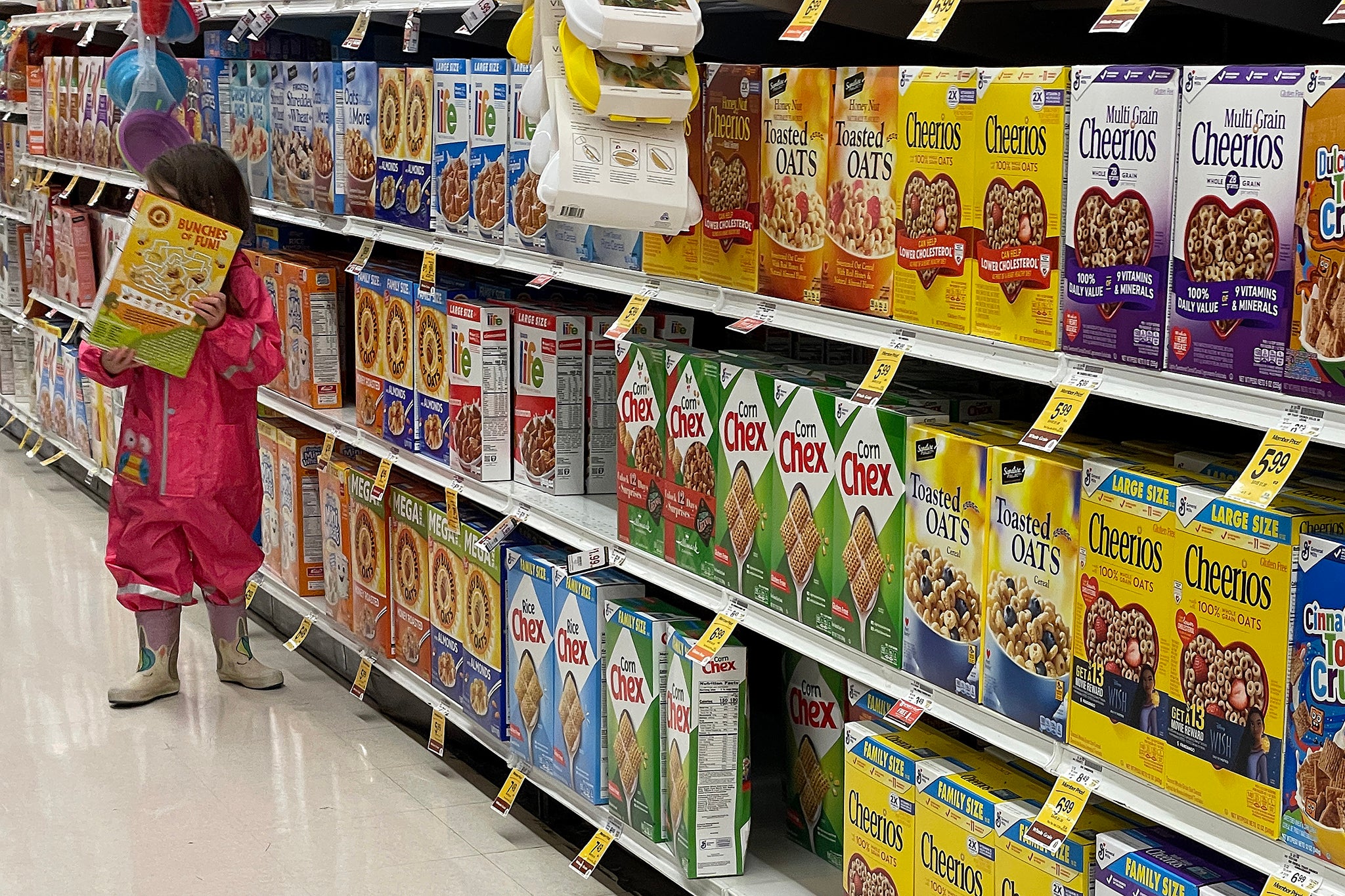Ronald McDonald, Uncle Ben and the mystery of the disappearing food mascots
Ever notice the reduction in illustrated or child-friendly brand icons on the supermarket aisle? Or that once-ubiquitous fast-food mascots seem to have been quietly retired? Kate Ng went looking for answers…


Where in the world is Ronald McDonald? There was a time when the indisputably terrifying burger mascot was everywhere, his bright yellow jumpsuit and shocking red wig ubiquitous at children’s birthday parties and in TV adverts. Yet outside of branding for the Ronald McDonald House Charities – and our occasional nightmares – the world’s most famous clown has all but disappeared.
It’s a pattern that’s been replicated all over the supermarket aisle, too. A slew of food mascots firmly associated with millennial and Generation X childhoods have also faded from view. Haven’t you ever wondered what happened to breakfast cereal icons like the Honey Nut Cheerios Buzz Bee or the Golden Nuggets prospector? Or Froot Loops’ Toucan Sam? And where art thou, Uncle Ben?
Ronald McDonald’s vanishing act has been traced to a spate of “killer clown” sightings in 2016, in which morbid pranksters in the US, Canada, Australia and the UK filmed themselves spooking members of the public while dressed in pale makeup, red noses and comically large shoes. The 2017 release of killer-clown classic It, based on the Stephen King bestseller, only added fuel to the anti-Ronald fire. McDonald’s was effectively forced into retiring him. But for other mascots, explanations for retirement vary.
Sweet Dreams, an immersive art project by art collective Marshmallow Laser Feast and Factory International, is running at Manchester’s Aviva Studios until 1 September, and tackles this very boom in vanished icons. Told from the perspective of a panicked cartoon mascot named Chicky Ricky (and voiced by the comedian Munya Chawawa), the show revolves around a dying fast-food empire trying to find new ways to market themselves to the public.
Robin McNicholas, creative director of Marshmallow Laser Feast, says that the appeal of cartoon mascots lies in their direct link to our childhoods. “If I close my eyes, I can see the friendly Coco Pops mascot, Coco the Monkey, and hear the jingle, and I immediately want a bowl of Coco Pops cereal,” he tells me. “A lot of these characters were created to put us in an almost childlike state, they’re always smiling and reassuring, as though to say, ‘It’s OK, you can eat this, open wide’.”
That may, it turns out, have been the wider problem with them. Brands began directly advertising to children in the Sixties via Saturday morning cartoons, a trend that continued well into the Noughties. Children were a captive audience, and able to twist their parents’ arms into buying whatever they saw on screen.
You can just take Ronald McDonald and put him in any scenario and it’s really dangerous for the brand. And now, with artificial intelligence and the viral creativity of people on the internet, it’s too easy to take something that was meant to be quite innocent and turn it into something quite scary
This marked a sea change from the original audience for brand mascots. According to Dr Richard Hornsey, associate professor in modern British history at the University of Nottingham, early mascots of the Twenties and Thirties were largely targeted at middle-class housewives who suddenly found themselves without servants. The mascots themselves tended to be ingredient-led. There was the Little Red Ring Lady, for instance, who represented Red Ring Self-Raising Flour and would “wave a magic wand to make food appear”. There was also Marmite Girl, whose job it was to extol the nutritious benefits of the divisive spread.
Dr Hornsey believes that brand mascots also became common during this time in tandem with mass production – brands were therefore desperate to differentiate themselves from one another. At the same time, the Twenties marked the beginnings of cinema in Britain, giving brands the opportunity to experiment with animation to sell their products. “Creating a brand mascot was a way of trying to make people more emotionally engaged with the product,” he says. “Animation allowed brands to make the character expressive, which helped foster a connection.”
The advent of fast food in the US subsequently brought with it a boom in advertising geared towards children. Dr Hornsey thinks that while there was an initial reluctance to “overtly chase children” with advertising in the UK, it did bleed across the pond in the Fifties and Sixties. This coincided with the arrival of colour TV and new animation technologies. One of the best examples of this evolution was Kellogg’s mascot Tony the Tiger, who went from being a round-faced and approachable black-and-white cartoon to an ultra-buff, three-dimensional animated big-cat Chad. This further led to the advent of “pester power”, children hounding parents to buy them kid-friendly products they’d seen on television.

By the mid-Noughties, though, the tide had begun to turn against advertising to children. Studies showed that the promotion of unhealthy foods to youngsters increased their consumption of the product, and linked TV ads and mascots to the growing issue of childhood obesity all around the world. (Numerous governments, meanwhile, have attempted to ban kids’ cereal mascots such as Tony the Tiger and Coco the Monkey over the years, but so far the big cat has endured). A 2010 study by the UCLA Fielding School of Public Health found that “commercial television pushes children to eat a large quantity of foods they should consume least: sugary cereals, snacks, fast food and soda pop”. Regulations were put in place to reduce the quantity and type of TV food advertising that children were exposed to, which meant the colourful, cutesy characters and catchy jingles so heavily relied upon by brands were no longer as effective.
Tamara Connolly, co-director of Space Doctors, adds that along with this new focus on health and wellness came an interest in brands being honest and transparent with their consumers. This accelerated the downfall of the food mascot, she says. “This drive towards authentic messaging started in the Nineties and is still with us in some ways,” she says. “[It] revealed that the mascot isn’t necessarily the best vehicle for messaging. There was more of an emphasis on the brand’s origin story and benefits of their product, and a pivot towards celebrity endorsements and brand ambassadors. It made brands more relatable to have a real person talking directly to the consumer rather than a mascot.” To the general public, the fictional character, once so beloved for its ability to capture our imaginations and stoke desire, became a mask for brands to hide behind.
Satirical subversion of established brand mascots also became an issue. Dr Hornsey points towards Banksy’s disturbing Napalm artwork as a clear example: the print borrows from the famous and harrowing image, captured by photographer Nick Ut, of nine-year-old Phan Thi Kim Phuc, who is naked and terrified as she flees a napalm blast that hit her village in Vietnam. In Banksy’s interpretation, Phan is flanked not by other children and Vietnamese Army soldiers, but by Ronald McDonald and Mickey Mouse.
“You can just take Ronald McDonald and put him in any scenario and it’s really dangerous for the brand,” Dr Hornsey says. “And now, with artificial intelligence and the viral creativity of people on the internet, it’s too easy to take something that was meant to be quite innocent and turn it into something quite scary.”

Shifting cultural moods have also played a part in the erasure of mascots, a fate that befell Uncle Ben of Uncle Ben’s rice. In 2020, amid the Black Lives Matter movement, the brand’s owner Mars was accused by some activists of perpetuating racial stereotypes via Ben’s illustrated mascot: a Forties-era Black man in a bow tie, which was reportedly modelled after a hotel maître d’ who may or may not have actually existed. The portrait was dropped from the brand’s packaging as a result of the protests, while Uncle Ben’s was renamed Ben’s Original.
This may not be the end of the mascot, though. Connolly believes they’re even on the rise again, particularly among smaller, independent brands and restaurants. McNicholas agrees, pointing towards fried chicken shops in east and southeast London that tend to feature happy, smiling chickens on their storefronts. “On the whole, I think we are seeing smaller mascots in smaller places, whereas the bigger corporations are eschewing them a bit, maybe for aesthetic reasons,” he says.
Connolly thinks that the preference for food mascots shown by independent brands speaks to their relative size in comparison to a behemoth like Kellogg’s. “It’s a question of nimbleness and an ability to respond to culture faster, as well as needing to take risks in order to succeed,” he says. “Larger brands are more likely to be risk averse; but I think there’s room for the resurgence of the big, iconic food mascot. Right now, there’s so much rationality coming from messaging – about health and functional benefits – but we’re looking for something that will attend to our emotional needs, something lighter, more expressive.”
So while it’s unlikely that Ronald McDonald will clown around again any time soon, your local high street may soon be inundated with upbeat cartoon illustrations on storefronts, all eagerly beckoning you inside.
“The pendulum is swinging,” Connolly says. “Food mascots will return.”
‘Sweet Dreams’ runs at Manchester’s Aviva Studios until 1 September, with tickets available here
Join our commenting forum
Join thought-provoking conversations, follow other Independent readers and see their replies
Comments